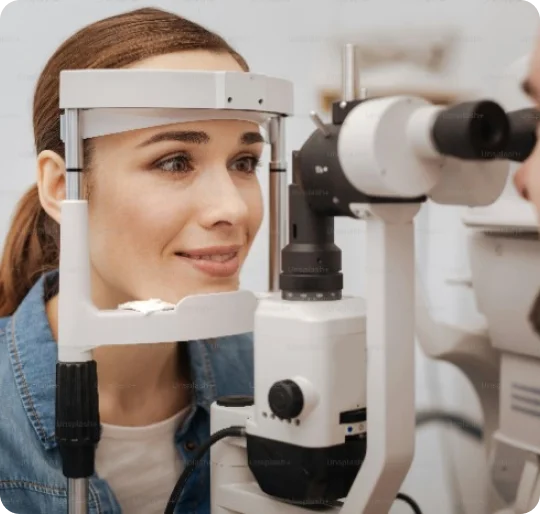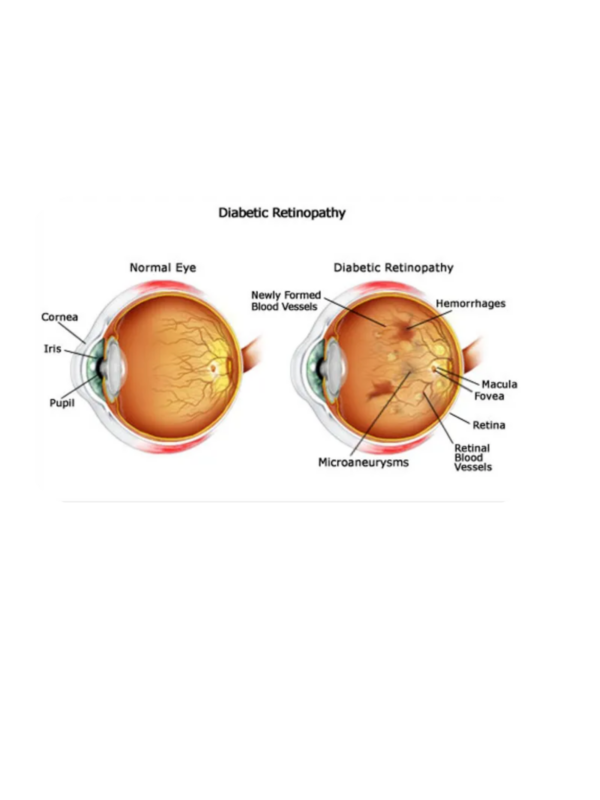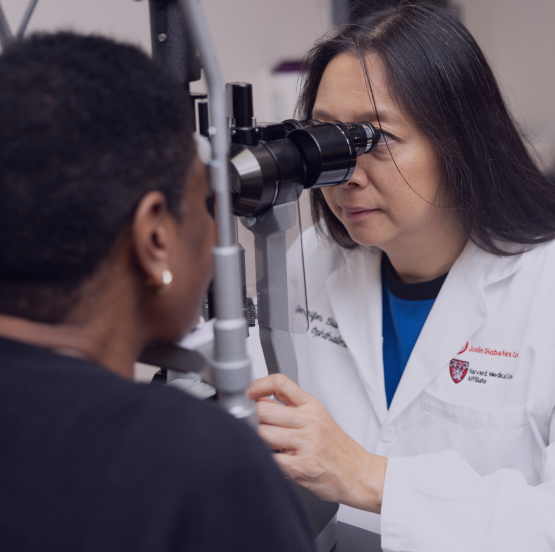Diabetic Retinal Disease (DRD) includes all diabetes-related changes in the retina, including harm to retinal blood vessels (diabetic retinopathy or DR), swelling in the retina (diabetic macular edema or DME), and damage to retinal nerve cells that help us see (diabetic retinal neurodegeneration or DRN). Over the next few decades, growing rates of diabetes across the globe will put increasing numbers of people at risk for vision loss and blindness from DRD.
About Diabetic Retinal Disease
Diabetic retinal disease (DRD) remains a leading cause of vision loss and blindness among working-age adults worldwide. Anyone with diabetes can develop DRD, which is an abnormality in the retina, the light-sensitive tissue lining the inner surface of the eye, that occurs because of chronic abnormalities of metabolism, including high blood sugars from diabetes.

Symptoms
In the early stages, DRD is usually asymptomatic. As the disease worsens, people may experience blurred vision, floaters, fluctuating vision, impaired color vision, and, eventually, complete vision loss if left untreated. However, even with advanced DRD, people may not experience any symptoms, which is why annual or more frequent dilated eye examination or screening is recommended.
Signs
A dilated eye examination or images of the retina may show loss of retinal nerve tissue, loss of retinal blood vessels, growth of abnormal, new retinal blood vessels, swelling of the retina, and in the most vision-threatening cases of DRD, hemorrhage and retinal detachments. Retinal imaging and measures of visual function can help document or uncover signs of DRD.

Preventing and reducing DRD
Risk factors for DRD include high blood sugars, blood pressure, and blood cholesterol levels.

Get Regular Eye Checkups
It's important to go to the eye doctor at least once per year, ideally for a dilated, comprehensive eye examination. Currently, some treatments can prevent and restore vision loss from DRD as long as they are given before the disease is too advanced.

Keep Blood Sugar, Blood Pressure, and Cholesterol in Check
Eating healthy, taking medications as prescribed, and keeping blood sugars, blood pressure, and cholesterol as normal as possible can help slow DRD progression.

Don't Smoke, Stay Healthy
Quitting smoking, exercising, and maintaining a healthy weight are good for the whole body, including the eyes.
Treatment Options

Injections of Medication into the Eye
Medications such as anti-vascular endothelial growth factor (anti-VEGF) agents and/or steroids can be injected into the eye to treat retinal swelling, abnormal new blood vessel growth, or to reduce the risk of bleeding or retinal detachment.

Laser Therapy
Several types of laser treatment are also effective at treating DRD. Laser treatment may treat retinal swelling or abnormal new blood vessel growth or reduce the risk of bleeding or retinal detachment.

Eye Surgery
A vitrectomy can be helpful in advanced cases of DRD to remove blood from the eye, peel abnormal retinal membranes or to fix retinal detachments.


I realized that if I spoke out, I might be able to help others better cope and manage their diabetes.”
— Mary Tyler Moore
Future Directions for Research
The scientific understanding of DRD has improved over the last few decades, and current treatments are effective for many with DRD. However, people across the world still suffer significant vision loss and blindness from the disease. Continued efforts are essential for advancing our understanding of the molecular and cellular pathways responsible for vision loss from DRD and developing more effective treatments and prevention. The Mary Tyler Moore Vision Initiative is actively engaged with international leaders in the scientific and medical communities in developing programs to enable and support research in areas including, but not limited to the following:
New, more effective therapies: Exploring new molecular pathways and therapeutic targets beyond those addressed by current treatments could provide additional options to preserve and restore vision in people with DRD.
An updated diagnostic and staging system for DRD: Key insights from high-resolution retinal imaging and improvements in our ability to measure visual changes in people with diabetes are being evaluated for incorporation into the current DRD diagnostic and staging systems.
Artificial intelligence (AI) methods to improve diagnosis and access to DRD care: AI approaches are already used for automated detection and grading severity of DRD, frequently in coordination with telemedicine programs that can schedule eye care appropriately for patients with DRD. Additional research is needed to improve the ability of these systems to grade severity and predict DRD severity more precisely in diverse populations from across the globe.
Regeneration, Neuroprotection, and Gene Therapy Strategies: Developing therapies aimed at repairing, replacing and/or preserving retinal neural and vascular tissue could prevent vision loss and potentially restore vision in people with DRD. Future gene therapy alternatives might allow us to correct the underlying molecular abnormalities in DRD
There is currently no cure for Diabetic Retinal Disease
We must work together to stop vision loss and blindness from diabetes NOW!
Take Action
Donate to Advance Research for a World without Vision Loss and Blindness from Diabetes
The sight you help save may be your own or that of someone you love.
DONATE

Join Our Email List
By submitting this form, you are consenting to receive marketing emails from: Mary Tyler Moore Vision Initiative. You can revoke your consent to receive emails at any time by using the SafeUnsubscribe® link, found at the bottom of every email. Emails are serviced by Constant Contact
